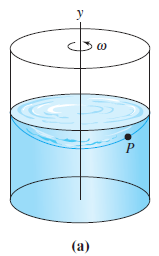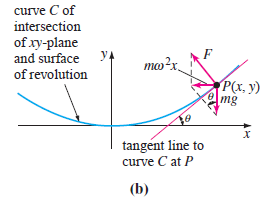Question: As shown in following figure (a), a rightcircular cylinder partially filled with fluid is rotated with a constant angular velocity Ï about a vertical y-axis
(a) At P there is a reaction force of magnitude F due to the other particles of the fluid which is normal to the surface S. By Newton€™s second law the magnitude of the net force acting on the particle is mω2x. What is this force? Use the following figure (b) to discuss the nature and origin of the equations
Fcosθ = mg, Fsinθ = mω2x
(b) Use part (a) to find a first-order differential equation that defines the function y = f (x).


(a) curve C of intersection of xy-plane and surface y of revolution mwx, P(x. y) mg tangent line to curve C at P (b)
Step by Step Solution
3.35 Rating (167 Votes )
There are 3 Steps involved in it
a As shown in above figure a in the text the resultant of the reaction force of magnitude F ... View full answer

Get step-by-step solutions from verified subject matter experts
Document Format (2 attachments)
1596_6062c74cf4193_674999.pdf
180 KBs PDF File
1596_6062c74cf4193_674999.docx
120 KBs Word File


